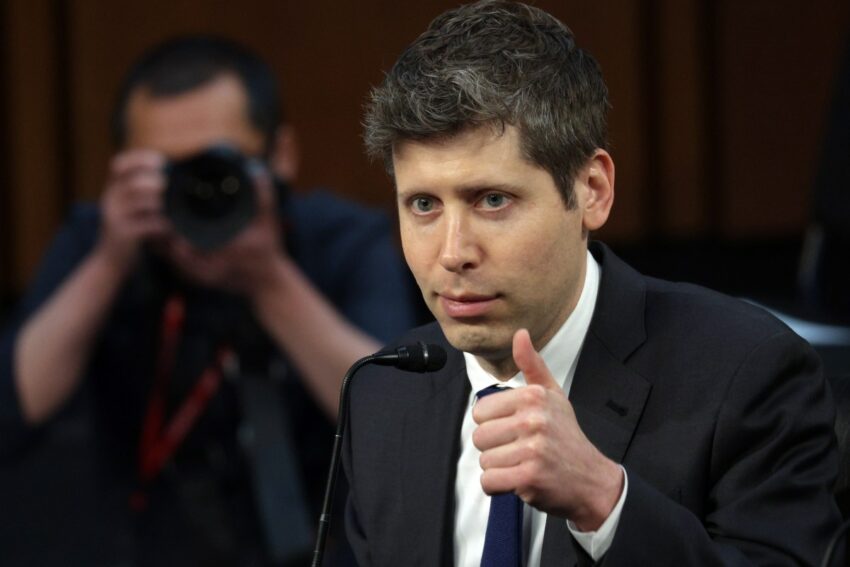
should ai do everything openai thinks so OpenAI’s recent decisions to remove certain safety measures have sparked a debate about the role of artificial intelligence in society and who should guide its development.
should ai do everything openai thinks so
The Current Landscape of AI Development
In the rapidly evolving world of artificial intelligence, Silicon Valley has long held a reputation for prioritizing innovation over caution. This ethos is becoming increasingly evident as companies like OpenAI take bold steps that challenge traditional safety protocols. The recent episode of the Equity podcast, featuring Kirsten Korosec, Anthony Ha, and Max Zeff, delves into the implications of this shift, particularly as it relates to the removal of guardrails that were once considered essential for responsible AI deployment.
The Shift in OpenAI’s Approach
OpenAI, a leader in AI research and development, has made headlines for its groundbreaking technologies, including the widely used ChatGPT. However, the organization’s recent decisions to eliminate certain safety measures have raised eyebrows. Critics argue that this move could lead to unintended consequences, jeopardizing user safety and ethical standards in AI applications.
Historically, OpenAI has positioned itself as a proponent of responsible AI development. The organization initially implemented various guardrails designed to mitigate risks associated with AI misuse. These included content moderation systems and guidelines aimed at preventing harmful outputs. However, as competition intensifies in the AI sector, particularly from venture capital-backed firms, OpenAI appears to be reevaluating its stance on these safety measures.
The Role of Venture Capitalists
Venture capitalists (VCs) play a significant role in shaping the direction of AI development. Their influence can often prioritize rapid growth and market capture over ethical considerations. In the podcast discussion, the hosts highlighted how some VCs are openly critical of companies like Anthropic, which advocate for AI safety regulations. This criticism reflects a broader industry sentiment that favors unbridled innovation, often at the expense of responsible practices.
This tension between innovation and responsibility raises important questions about the future of AI. As VCs push for faster advancements, the risk of overlooking ethical implications becomes more pronounced. The podcast hosts emphasized that this dynamic could lead to a landscape where companies prioritize short-term gains over long-term societal impacts.
The Implications of Removing Guardrails
The removal of safety measures by OpenAI and other companies could have far-reaching consequences. As AI technologies become more integrated into everyday life, the potential for misuse increases. Without adequate safeguards, the risk of harmful applications—such as misinformation, privacy violations, and biased decision-making—grows significantly.
The Balance Between Innovation and Safety
Finding the right balance between fostering innovation and ensuring safety is a complex challenge. The podcast discussion highlighted that while innovation is crucial for technological advancement, it should not come at the cost of ethical considerations. The hosts argued that a more nuanced approach is necessary—one that allows for innovation while also prioritizing the safety and well-being of users.
As AI systems become more powerful, the need for robust safety measures becomes increasingly urgent. The potential for AI to influence critical areas such as healthcare, finance, and education underscores the importance of responsible development. Stakeholders must consider the broader implications of their decisions, particularly as AI systems gain more autonomy and decision-making capabilities.
Stakeholder Reactions
The reactions from various stakeholders in the AI ecosystem have been mixed. Some industry leaders express concern over the implications of removing safety measures, advocating for a more cautious approach. They argue that the potential risks associated with unchecked AI development could undermine public trust and lead to regulatory backlash.
Conversely, proponents of rapid innovation argue that imposing strict regulations could stifle creativity and hinder technological progress. They contend that the market will naturally regulate itself through competition, with companies that prioritize safety ultimately gaining a competitive advantage. This perspective reflects a broader belief in the power of innovation to drive positive change, even in the face of potential risks.
The Future of AI Regulation
As the debate over AI safety continues, the question of regulation looms large. Governments and regulatory bodies around the world are grappling with how to approach AI governance. The podcast discussion touched on the need for a collaborative effort among industry leaders, policymakers, and ethicists to establish a framework that balances innovation with safety.
Global Perspectives on AI Regulation
Different countries are taking varied approaches to AI regulation. In the European Union, for example, there is a strong emphasis on establishing comprehensive regulations that prioritize user safety and ethical considerations. The EU’s proposed AI Act aims to create a legal framework that categorizes AI systems based on their risk levels, imposing stricter requirements on high-risk applications.
In contrast, the United States has been slower to implement comprehensive regulations. The prevailing sentiment among many tech leaders is that excessive regulation could stifle innovation. However, as incidents involving AI misuse become more frequent, there is growing pressure for the U.S. to adopt a more proactive stance on AI governance.
The Role of Ethical AI Development
Ethical AI development is becoming a focal point in discussions about the future of technology. Organizations are increasingly recognizing the importance of incorporating ethical considerations into their AI strategies. This includes establishing guidelines for responsible AI use, conducting impact assessments, and engaging with diverse stakeholders to ensure that a wide range of perspectives is considered.
Moreover, as AI systems become more complex, the need for transparency in AI decision-making processes is paramount. Users must understand how AI systems operate and the factors influencing their outputs. This transparency can help build trust and accountability, ensuring that AI technologies are developed and deployed responsibly.
Conclusion: Navigating the Future of AI
The ongoing debate surrounding AI safety and innovation highlights the complexities of navigating the future of technology. As companies like OpenAI remove safety measures in pursuit of rapid advancements, the implications for society are profound. Stakeholders must grapple with the balance between fostering innovation and ensuring responsible development.
The discussions among industry leaders, VCs, and policymakers will shape the trajectory of AI in the coming years. As the technology continues to evolve, the need for a collaborative approach to regulation and ethical considerations will be crucial. Only through thoughtful dialogue and proactive measures can we harness the potential of AI while safeguarding the interests of society.
Source: Original report
Was this helpful?
Last Modified: October 18, 2025 at 12:38 am
3 views















